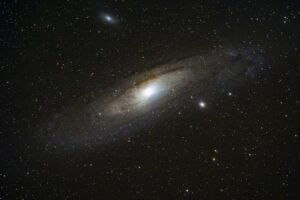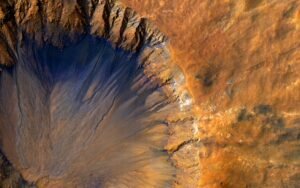Exoplanets, also known as extrasolar planets, are planets that orbit stars outside of our solar system. These planets come in a variety of sizes, compositions, and distances from their host stars. The discovery of exoplanets has revolutionized our understanding of the universe and has opened up new possibilities for finding potentially habitable worlds beyond our own. Since the first confirmed detection of an exoplanet in 1992, astronomers have discovered thousands of exoplanets using a variety of detection methods, including the transit method, radial velocity method, and direct imaging.
Key Takeaways
- Exoplanets are planets that orbit stars outside of our solar system, and they have been a focus of scientific research in recent years.
- The discovery of an exoplanet with a diamond core has opened up new possibilities for understanding the composition and formation of planets in our universe.
- The exoplanet with a diamond core is believed to be twice the size of Earth and eight times its mass, with a core made largely of carbon and oxygen.
- This discovery has implications for our understanding of planetary formation and the potential for finding other exoplanets with unique and unexpected characteristics.
- Future research and exploration will focus on studying the exoplanet’s atmosphere and surface to learn more about its composition and potential for habitability.
Discovery of Exoplanet with Diamond Core
In 2012, astronomers made a groundbreaking discovery when they found an exoplanet with a diamond core. This exoplanet, known as 55 Cancri e, is located about 40 light-years away from Earth and orbits a star in the constellation of Cancer. 55 Cancri e is a super-Earth, meaning it is larger than Earth but smaller than gas giants like Neptune. What makes this exoplanet particularly unique is its composition. Scientists believe that 55 Cancri e has a solid diamond core, making it the first known planet to have this extraordinary feature.
The discovery of an exoplanet with a diamond core has sparked great interest and excitement within the scientific community. The idea of a planet made mostly of diamond raises questions about how such a planet could form and what its surface and atmosphere might be like. This discovery has also led to further research into the formation and composition of exoplanets, as well as the potential for finding other exotic planetary compositions in the universe.
Characteristics of the Exoplanet
55 Cancri e is an intriguing exoplanet with several unique characteristics. It is located very close to its host star, completing one orbit in just 18 hours. This close proximity to its star means that 55 Cancri e is tidally locked, with one side always facing the star and the other side in perpetual darkness. As a result, the temperature on the day side of the planet can reach up to 2500 degrees Celsius, hot enough to melt metal.
In addition to its extreme temperatures, 55 Cancri e is also believed to have a dense atmosphere rich in carbon dioxide and possibly even carbon monoxide. The presence of these carbon-rich compounds supports the theory that the planet may have a diamond core, as diamonds are formed from carbon under high pressure and temperature. The combination of a diamond core and a scorching hot surface makes 55 Cancri e one of the most exotic and intriguing exoplanets discovered to date.
Implications of the Discovery
| Discovery | Implications |
|---|---|
| New species | Impact on biodiversity and ecosystem understanding |
| New technology | Potential for scientific and technological advancements |
| New medicine | Possibility of medical breakthroughs and treatments |
The discovery of an exoplanet with a diamond core has significant implications for our understanding of planetary formation and composition. It challenges our previous assumptions about the types of materials that can make up a planet and opens up new possibilities for the diversity of exoplanets in the universe. The existence of a diamond core on 55 Cancri e suggests that there may be other exoplanets with similarly exotic compositions waiting to be discovered.
Furthermore, the discovery of 55 Cancri e has sparked interest in the potential for mining valuable resources from exoplanets in the future. While the extreme conditions on 55 Cancri e make it unlikely that we will be able to extract diamonds from its surface any time soon, the idea of mining resources from exoplanets raises ethical and practical questions about our interactions with other worlds and the potential impact on their ecosystems.
Future Research and Exploration
The discovery of 55 Cancri e has opened up new avenues for future research and exploration in the field of exoplanetary science. Scientists are eager to learn more about the formation and composition of this unique exoplanet, as well as to search for other planets with similarly exotic features. The development of new telescopes and space missions, such as the James Webb Space Telescope and the upcoming PLATO mission, will provide valuable tools for studying exoplanets in greater detail.
In addition to studying 55 Cancri e, astronomers are also interested in exploring other potentially habitable exoplanets that may harbor conditions suitable for life as we know it. The discovery of exoplanets with diamond cores highlights the incredible diversity of worlds beyond our solar system and underscores the need for continued exploration and research to unlock the mysteries of these distant planets.
Comparison to Earth’s Core

The discovery of an exoplanet with a diamond core raises interesting comparisons to Earth’s own core. While Earth’s core is composed primarily of iron and nickel, with some trace elements such as sulfur and oxygen, 55 Cancri e’s diamond core represents a stark contrast in composition. This stark difference highlights the incredible diversity of planetary compositions that can exist in the universe.
Furthermore, studying the composition and characteristics of 55 Cancri e provides valuable insights into the processes that govern planetary formation and evolution. By comparing 55 Cancri e to Earth and other known exoplanets, scientists can gain a better understanding of the factors that influence planetary composition and how these factors shape the physical and chemical properties of planets throughout the universe.
Conclusion and Potential for Further Discoveries
The discovery of an exoplanet with a diamond core represents a significant milestone in our exploration of distant worlds beyond our solar system. This discovery has opened up new possibilities for understanding planetary formation and composition, as well as for exploring the potential diversity of exoplanetary systems in the universe. As technology continues to advance and new telescopes and space missions are developed, we can expect further discoveries that will continue to expand our knowledge of exoplanets and their remarkable features.
The implications of finding an exoplanet with a diamond core extend beyond scientific curiosity, raising questions about resource extraction, planetary ecosystems, and our place in the universe. As we continue to explore and study exoplanets, it is important to approach these discoveries with caution and consideration for their potential impact on our understanding of the cosmos and our relationship to other worlds. The discovery of 55 Cancri e is just one example of the incredible diversity and complexity of exoplanets waiting to be explored, and it serves as a reminder of the vast potential for further discoveries that await us in the depths of space.
Discovering a planet made entirely of diamonds may seem like something out of a science fiction novel, but scientists have recently found evidence of such a celestial body. This fascinating revelation has sparked discussions about the potential value and implications of such a discovery. To learn more about the latest developments in space exploration and scientific discoveries, check out this insightful article on Just Tidings.




















+ There are no comments
Add yours